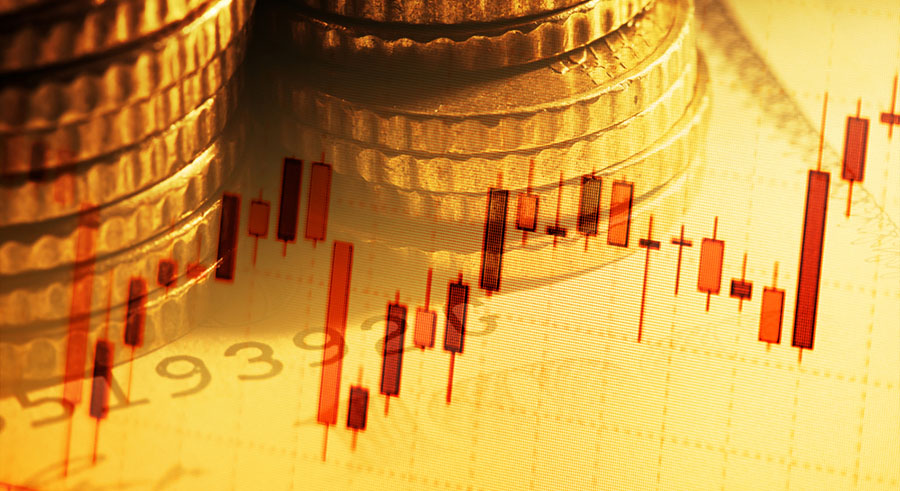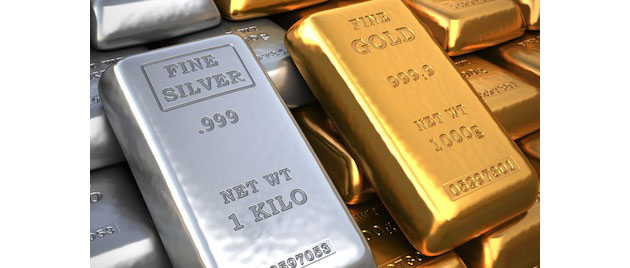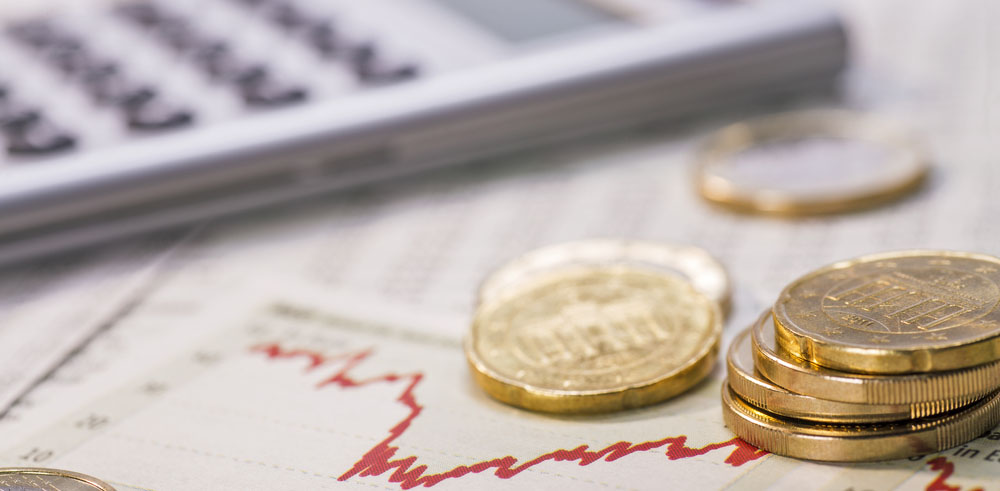The Gold Report: The CEO of U.S. Global Investors, Frank Holmes, recently told gold investors to "keep calm and invest on." I hope you have the T-shirt royalties for that. What advice do you have to help investors do that?
Ralph Aldis: We like this phrase because it reminds investors not to let their emotions get the best of them. Instead, investors need to plan an investment strategy and make sure it includes all their assets. Investors need to think about what the weightings are in those assets, track quarterly performance numbers to make sure assets aren't correlated with each other, make sure there is diversification and rebalance the portfolio every year.
TGR: What's a good asset allocation mix through at least the end of the year?
RA: The asset mix will be a function of age, investment objectives and how soon liquidity is needed. Generally, a maximum of 5–10% in gold and gold stocks, 50% in equities, 30% in fixed income and the balance in some other asset, such as real estate or home value.
TGR: U.S. Global Investors recently reported that gold has 30% upside potential over the next 18 months. What do you believe will specifically move the gold price?
RA: A 30% rebound is well within the normal volatility swings of gold for a given year. Right now, we have the seasonal rally in the gold market. Buyers, like jewelry manufacturers, return to the market usually in late July or August and start restocking to get gold into the pipeline.
Another factor is the employment data that recently came out. It beat expectations, and people got excited. But most of the gains came from part-time jobs, which were up 360,000, and we lost 240,000 full-time jobs. The full U6 unemployment rate actually climbed to 14.3%, up from 13.8% in May. The quality of the employment numbers was dismal, but people saw the headline number and thought "Woohoo, go long equities!" Macquarie Research released a study on July 11 that said the Federal Reserve tapering is much further out than expected—Q4/16 not Q4/14.
TGR: Can a climbing gold price and a strong U.S. economy coexist?
RA: Yes. Some economic growth and a little inflation could get the gold price and the economy growing in sync. But you need the dollar to weaken, which is a function of U.S. interest rates going down. The Federal Reserve doesn't want a rising interest rate because that stifles some of the economic activity and makes the U.S. debt burden greater.
TGR: What about central bank buying by emerging market countries? If their economies are stronger, will some of the spoils go into gold?
RA: We've had seven months in a row of central banks buying gold. The U.S. dollar isn't as significant to official holdings as it used to be. It has lost a lot of influence, and emerging markets don't feel they need to own dollars instead of gold.
TGR: But if the American economy is rolling, chances are the global economy is doing well. If these emerging market economies buy more gold, won't that put pressure on the gold price?
RA: That would be the hedge that I would want to be making, too, trying to diversify some of that risk as some countries, like China, probably have way too many dollars in their official reserves.
TGR: What are some signs for investors that it's safe to return to the precious metals sector?
RA: We look at the year-over-year changes in the gold price to indicate whether the price has moved up two standard deviations from its mean, which means that gold may soon correct, or whether the metal has moved down two standard deviations from its mean, in which case, gold is due for a rally.
Also, look for the exhaustion of money flows out of the gold sector, which is happening now. We're just beginning to see positive money flows come into some of our gold funds now.
"Some economic growth and a little inflation could get the gold price and the economy growing in sync."
We're also seeing gold analysts capitulate. These people get paid to love stocks, and they capitulated. When analysts do that, I believe it's a sign to buy.
TGR: Has the slide in precious metals prices and the recent selloff exposed some of the flaws in precious metals exchange-traded funds (ETFs)?
RA: If you're a U.S. citizen, the biggest drawback is a tax liability issue. The SPDR Gold Trust ETF (GLD) is taxed as a collectible, so if you recently sold and made a gain, you actually have to make twice as much than you would on a gold stock investment. It's liquid and gives you exposure, but it's just not tax efficient.
TGR: You said investors should have 5–10% of their portfolios in gold and gold equities. Why should they hold Canadian or American gold equities versus gold futures or gold ETFs?
RA: Tax efficiency is a consideration. Plus gold equities can move two to three times the magnitude of the underlying metal price. And our research has found that a small weighting of gold stocks in a portfolio of U.S. companies historically increased return with the same amount of risk.
TGR: But some of the names you're following have limited liquidity. How do investors deal with that?
RA: Sometimes people look at our mutual fund holdings and marvel that there are 150 names there. But we want to have enough liquidity to adjust positions. Maybe we'd like to have a bigger position, but if investment conditions change for that particular stock, you could compromise your liquidity. If we can build a portfolio out of 10 or 20 junior names that meet our criteria, then we're insulated from some of the extreme price moves.
TGR: Could you share the names of some of those juniors with us?
RA: Almaden Minerals Ltd. (AMM:TSX; AAU:NYSE) has a great management team that is adept at project generation. It's a father and son combo; the son lives in Mexico. It's not a giant position with us, but the company has the right skill set to build its portfolio.
"When the market knows more than you do, you can see it through price leadership. Ask why a stock is outperforming and see if it makes sense."
Pilot Gold Inc.'s (PLG:TSX) team has a successful track record of selling its prior asset, Fronteer Gold Inc., to Newmont Mining Corp. (NEM:NYSE) for around $2 billion. Pilot still has some assets in Nevada, and it has had some relatively high-grade hits in Turkey recently.
TGR: Is Pilot's TV Tower the reason you're in this play?
RA: Yes. It's in Turkey and Pilot owns 40% of it.
Rye Patch Gold Corp. (RPM:TSX.V; RPMGF:OTCQX) is another junior in our portfolio. The company had property staked around Coeur Mining Inc.'s (CDM:TSX; CDE:NYSE) Rochester mine and finally got a settlement instead of drawing out the legal battle. Bill Howald of Rye Patch did the right thing; now he has enough cash to carry him forward for two years. He has some good prospective ground and a royalty on the Rochester mine. But Rye Patch's shares got knocked down. It's probably a great buy at this point.
TGR: Why did the market punish it for something that, at first blush, looks like a very positive settlement?
RA: Some people did a quick valuation of the settlement on a per-share basis and just marked it down to that per-share value, and they basically threw out the other assets.
TGR: What is Rye Patch going to do with that $10 million ($10M)?
RA: I think Bill is going to stick to his knitting. He has some good exploration prospects, and he'll be judicious. He will probably plan it to make sure he can stay afloat for the next two years and continue to do the key work. But I don't have his work plan.
TGR: Does Pilot have sufficient cash to carry out development work on TV Tower and its other assets over the next two years?
RA: Yes, in the first quarter of 2013 financials showed about $24M in cash. But we also look at the relative performance, at the companies that show price leadership.
TGR: What is price leadership?
RA: We look at price performance over a period of time and for statistical significance of outperformance relative to others in that model.
Klondex Mines Ltd.'s (KDX:TSX; KLNDF:OTCBB) stock is up 25% over the last three months, and the average stock in the exploration and development space is down 25%. The company must be doing something right. We also own stock in Pretium Resources Inc. (PVG:TSX; PVG:NYSE), which is up almost 16%. Virginia Mines Inc. (VGQ:TSX) is up 11.9%. Even Mirasol Resources Ltd. (MRZ:TSX.V) is up 7% over the last three months. I feel that some of the smart money right now is already onto the high-grade stories.
"If we can build a portfolio out of 10 or 20 junior names that meet our criteria, then we're insulated from some of the extreme price moves."
When the market knows more than you do, you can see it through price leadership. Ask why a stock is outperforming and see if it makes sense. Klondex recently put out a news release indicating that its resource, an underground drift at its Fire Creek project in Nevada, is basically 132.8 grams per ton (132.8 g/t) over 144.2 meter strike. It already has 2 million ounces (2 Moz) at 9.95 g/t. It is high quality and high grade and in the politically safe jurisdiction of Nevada. We're the third largest shareholder. None of the top three shareholders has to raise any cash to meet redemptions. That stock won't have any selling pressure, but you can still buy it for $70M. I don't know where you can buy 2 Moz at 9.95 g/t for $70M.
TGR: Back to Pretium. About a year ago, Pretium was an $18 stock. Can it get back to that?
RA: Yes. Pretium is a binary story in that if this bulk sample works, its mine could be put into production for a relatively small amount of money. It could be a fourfold or fivefold lift on the stock. It's just not much money relative to some of these multibillion dollar projects.
TGR: What are some other junior producers where you see upside?
RA: Virginia Mines is one. Éléonore is being put into production by Goldcorp Inc. (G:TSX; GG:NYSE) and Virginia is already getting paid a big royalty. Virginia CEO André Gaumond arranged to get preproduction royalties from that royalty agreement with Goldcorp and has been getting them on Éléonore for the last couple of years. This is one situation where if you look at the value of the royalty, or you look at the value of the assets that Virginia Mines has, you're either getting one or the other for free.
Imperial Metals Corp. (III:TSX) is an up-and-comer. The company has two mines in production that are funding its push to get its Red Chris mine into production. It's in British Columbia, a politically safe jurisdiction. Management owns a lot of stock, and it's keen on not diluting. Imperial has a debt financing partner lined up and is doing everything it can to fund it internally. It says it is not going to do any equity and has been sticking to that.
Mandalay Resources Corp. (MND:TSX) is a producer currently evaluating potential acquisitions. Normally that's a negative, but it has shown it does very smart acquisitions. It found projects with either people or technical issues and fixed the problem. It turned them around and immediately started paying dividends out of its cash.
TGR: Can Mandalay be profitable at $1,200/ounce ($1,200/oz) gold and $18/oz silver?
RA: Yes. Our all-in production cost right now is $1,180/oz, and that's converting the gold, silver and even antimony to gold equivalent for cost. It's turning a profit, but margins are thin. Mandalay also has good management; it understands what investors want from a mining company. It's refreshing when you hear Mandalay's management present its accomplishments and vision of management.
TGR: What is its stated objective for growing the company?
RA: Mandalay won't grow just to grow. It wants to have healthy margins. It's not going to do just any acquisition; it can find a deal that makes sense.
TGR: What stories of companies trying to grow production at their current mines are on your radar?
RA: Luna Gold Corp. (LGC:TSX) is actually a great opportunity right now. The company will finish the phase 1 expansion of the Aurizona project in Brazil by the end of the year. The engineering is 90% complete and procurement packages have been 98% awarded. Aurizona is fully financed through existing cash and with its streaming partner, Sandstorm Gold Ltd. (SSL:TSX.V), to get phase 1 done and get to 125,000 ounces (125 Koz). It just did a resource expansion and is modeling a 200–300 Koz possible annual production. That would be phase 2.
TGR: Is that realistic?
RA: Based on that 4.6 Moz, do you mine it 125 Koz/year and have a 15- or 20-year mine life, or do you size it up to a reasonable level given the costs? You want to do the study to find out. I think it will be a go. However, one downside to the company is that it marketed in Q1/13 knowing it had bad news regarding the water issue. The stock was under $4/share when it was marketing, and now it's around $1.50/share. People were buying it at $3.50 or $3.75/share, and when it reported the quarter, it was a shortfall. The stock got pummeled.
TGR: What are some of the most recent junior positions you've added to the portfolio?
RA: Silver Bull Resources Inc. (SVB:TSX; SVBL:NYSE.MKT) is a recent addition. Coeur Mining owns 10% of the stock, and some other big hands are in there, but it has a very high silver grade that is supposed to be right at surface. Once you strip off that silver cap, you have a massive zinc ore body. For the company's market cap, which is $58M, you get something that will end up being taken out by the senior shareholders. The silver grade is very robust, and that zinc kicker is right under it. Plus you have a senior partnered up with it.
TGR: You say the smart money will go to the bigger players when we start to climb out of this cyclical trough. Any particular names?
RA: I don't know if the money will flow to Barrick because it is in such disarray. Goldcorp may be a beneficiary. Agnico-Eagle Mines Ltd. (AEM:TSX; AEM:NYSE) has a good corporate culture and high-quality ore bodies. It's in the top scores. Yamana Gold Inc. (YRI:TSX; AUY:NYSE; YAU:LSE) and Silver Wheaton Corp. (SLW:TSX; SLW:NYSE). Maybe Eldorado Gold Corp. (ELD:TSX; EGO:NYSE). Maybe Newmont because it is U.S. listed and is the only gold company included in the S&P 500. For funds limited to buying index constituents, it may be the only stock they can buy.
TGR: Do you have some parting thoughts for us, Ralph? Maybe something to bolster the hopes of the retail crowd?
RA: Gold investors are seeing two newer trends in gold. One has to do with a move out of paper gold to the physical holding of gold. Chinese gold imports from Hong Kong have more than tripled since 2012 and premiums for gold physical delivery in Shanghai jumped above $30/oz. In addition, the U.S. Mint suspended sales of its smallest American Eagle gold coin after it sold off its entire inventory.
The second trend is the extreme pessimism toward gold, with speculative short positions hitting a record level. As of the beginning of July, the number of outstanding gold short contracts was close to 140,000. I think investors will see some higher gold prices later this year.
TGR: Thank you for your insights.
Ralph Aldis, CFA, rejoined U.S. Global Investors as senior mining analyst in November 2001. He is responsible for analyzing gold and precious metals stocks for the World Precious Minerals Fund (UNWPX) and the Gold and Precious Metals Fund (USERX). Aldis also works with the portfolio management team of the Global Resources Fund (PSPFX) to provide tactical analyses of base metal, paper, chemical, steel and non-ferrous industries. Previously, Aldis worked for Eisner Securities, where he was an investment analyst for its high net-worth group and oversaw its mutual fund operations. Before joining Eisner Securities, Aldis worked for 10 years as director of research for U.S. Global Investors, where he applied quantitative skills toward stocks, portfolio tilting, cash optimization and performance attribution analysis. Aldis received a master's degree in energy and mineral resources from the University of Texas at Austin in 1988 and a Bachelor of Science in geology, cum laude, in 1981, from Stephen F. Austin University. Aldis is a member of the CFA Society of San Antonio.
Want to read more Gold Report interviews like this? Sign up for our free e-newsletter, and you'll learn when new articles have been published. To see a list of recent interviews with industry analysts and commentators, visit our Streetwise Interviews page.
DISCLOSURE:
1) Brian Sylvester conducted this interview for The Gold Report and provides services to The Gold Report as an employee or as an independent contractor. He or his family own shares of the following companies mentioned in this interview: None.
2) The following companies mentioned in the interview are sponsors of The Gold Report: Almaden Minerals Ltd., Pilot Gold Inc., Rye Patch Gold Corp., Pretium Resources Inc., Goldcorp Inc., Mandalay Resources Corp., Silver Bull Resources Inc. and Klondex Mines Ltd. Streetwise Reports does not accept stock in exchange for its services or as sponsorship payment.
3) Ralph Aldis: I or my family own shares of the following companies mentioned in this interview: None. I personally am or my family is paid by the following companies mentioned in this interview: None. The following companies are held in U.S. Global Investors' Gold and Precious Metals Fund and/or World Precious Metals Fund: Agnico-Eagles Mines Ltd., Almaden Minerals Ltd., Eldorado Gold Corp., Mirasol Resources Ltd., Goldcorp Inc., Imperial Metals Corp., Klondex Mines Ltd., Luna Gold Corp., Mandalay Resources Corp., Newmont Mining Corp., Pilot Gold Inc., Pretium Resources Inc., Rye Patch Gold Corp., Silver Bull Resources Inc., Silver Wheaton Corp., SPDR Gold Trust EFT, Virginia Mines Inc. and Yamana Gold Inc. I was not paid by Streetwise Reports for participating in this interview. Comments and opinions expressed are my own comments and opinions. I had the opportunity to review the interview for accuracy as of the date of the interview and am responsible for the content of the interview.
4) Interviews are edited for clarity. Streetwise Reports does not make editorial comments or change experts' statements without their consent.
5) The interview does not constitute investment advice. Each reader is encouraged to consult with his or her individual financial professional and any action a reader takes as a result of information presented here is his or her own responsibility. By opening this page, each reader accepts and agrees to Streetwise Reports' terms of use and full legal disclaimer.
6) From time to time, Streetwise Reports LLC and its directors, officers, employees or members of their families, as well as persons interviewed for articles and interviews on the site, may have a long or short position in securities mentioned and may make purchases and/or sales of those securities in the open market or otherwise.




























































